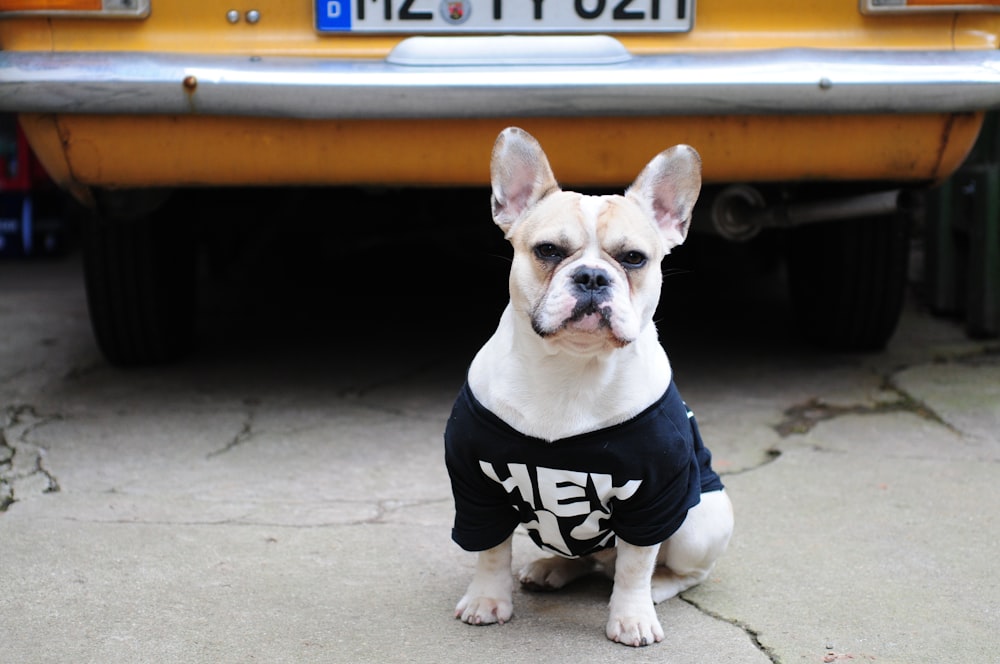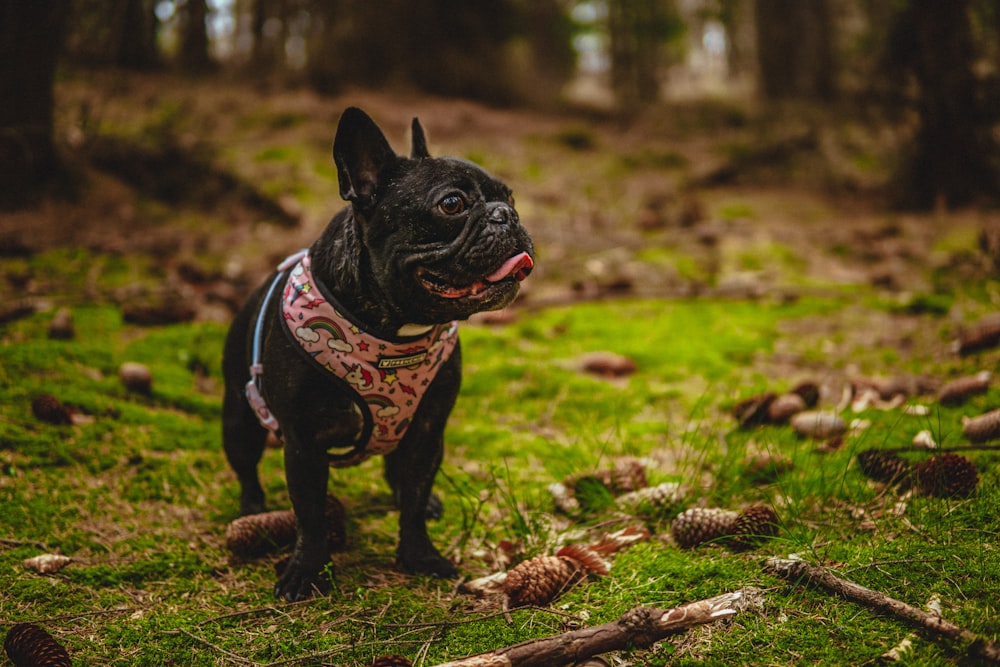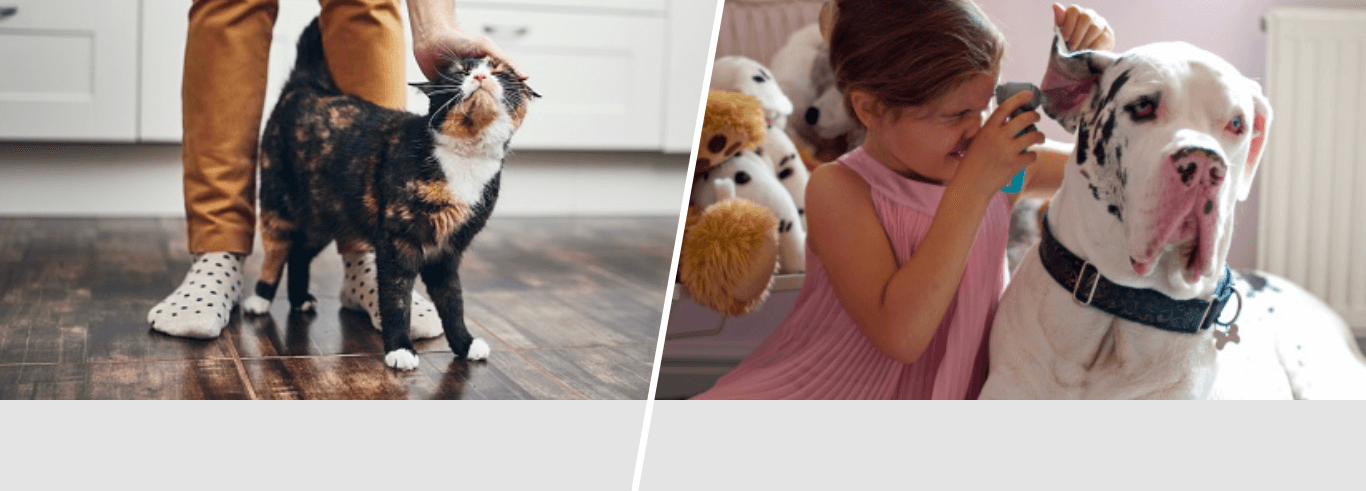Facts About French Bulldogs
With their short compact body, friendly demeanour and distinctive bat ears, the French Bulldog is one of the most loved canines in the United Kingdom. So, we have put together all you need to know about the popular breed with our key Frenchie facts.
French Bulldog fact file
Content provided from Vetstream’s Vetlexicon
| Breed Name | French Bulldog (Canis lupus familiaris) |
|---|---|
| General Appearance | Short, stocky build, broad shoulders, short nose, large pointed ears |
| Temperament | Lively, friendly, and affectionate, but sometimes stubborn |
| Gait/Movement | Quick and flowing |
| Coat | Short, smooth, shiny and fine |
| Colour | Brindle (a mixture of black and coloured hairs), pied (mostly white), fawn |
| Size | Height 28 cm – 30.5 cm Weight 11 kg – 13 kg |
| Lifespan | 10 – 14 years |
French Bulldog history
Frenchies were first bred in the 1800s in Nottingham by lace makers who wanted to create a smaller version of the English Bulldog. Over decades of crossing Toy Bulldogs with other breeds like the Rat Terrier, the French Bulldog was born.
Several decades later, when craftsmen moved to France with their dogs, the French fell in love with these bat-eared pups and named them le Bouledogue Français.
How much is a French Bulldog?
As the UK’s second most popular dog breed, an adult Frenchie can sell for roughly £500. Puppies, however, average around £2,000.
How much a French Bulldog can cost can also vary based on the colour of their fur. Fawn Frenchies can range from very light to very dark beige brown, when their fur is a mix of black and fawn it is considered brindle fur. When a Frenchie’s fur is white with dark patches, they have a what is called a pied coat. These are the most desired coat colours and typically cost more. The less favourable colours are solid black, black and white, black and tan, mouse, grey/blue and liver/chocolate, therefore are likely to sell for less.
French Bulldog personality
French Bulldogs are playful, lively and easy-going. Owning a French Bulldog is a great option for families as they’re a protective breed that loves human interaction, however they are prone to separation anxiety, so Frenchies are better paired with people who are home often and always ready for play time.
Despite being excellent watchdogs, Frenchies rarely bark, which makes them a top choice for city living. If you ever hear them making a noise it’s most likely to let you know something has gone missing. The breed commonly gets on well with other dogs, cats and children, making them a great addition to any household and especially for first-time dog owners.
When do French Bulldogs stop growing?
French bulldogs generally stop growing in height at nine to twelve months. Throughout the first year of your Frenchie’s you’ll see them start to grow outwards. They’ll naturally build the extremely muscular and strong physique that you’re used to seeing on French Bulldogs.
During their second year of life, you’ll notice your dog’s head grow to be large and squarish with skin folds and wrinkles around their face. Once they’ve finally stopped bulking up, Frenchies average between 11 kg to 13 kg and are between 28 cm to 30.5 cm tall.

Grooming a French Bulldog
French Bulldogs don’t shed nearly as much as some other breeds like a German Shepherd for example, but you still may find hair or two around your home. This will increase as the summer months approach, and so you should introduce a weekly brushing routine to keep on top of their moulting.
When bathing your Frenchies, it’s important to keep shampoo away from their sensitive and delicate eyes. After washing, each of their skinfolds should be dried carefully. To prevent infection, you should also clean their ears every week.
How to train a French Bulldog
French bulldogs should be trained from a very young age. They can be strong-willed, so boundaries will need to be set early in life. As a companion breed, French Bulldogs love to please and respond well to positive reinforcement when training. It’s important to remain firm but fair while training to keep your pooch happy – try to avoid giving in to their stubborn nature.
To minimise their separation anxiety, it’s important to socialise your dog. Introduce them to different people, places and other dogs to avoid anxiety when taking them outdoors, again, this is most effective when done from a young age.
How much exercise does a French Bulldog need?
Your French bulldog should get at least an hour of daily exercise. Although, due to their short muzzles and breathing problems, you should let your pooch set the pace of your walks.
Your dog should be well trained before you even consider taking them off their lead, but if you have a back garden, letting your Frenchie wander around and explore is completely fine. With such a playful nature, it’s great to have plenty of toys available for your dog to play with.
When the weather is warm, it’s best to take your French Bulldog out for a short walk either early in the morning or during the evening when it’s cooler. During the summer, ensure your dog has water to drink to help prevent them from overheating.

How long do French Bulldogs live?
The average lifespan of a French Bulldog is between ten and fourteen years. They can be prone to putting on weight, so only give them treats sparingly to ensure they live a long and fruitful life.
If you’re looking for ways to reward your dog, try using positive reinforcement, toys, and physical affection. If you do get concerned with your Frenchie’s food consumption, you can visit your vet who will help you create a set diet plan for your pooch.
What health issues could a French Bulldog experience?
Content provided from Vetstream’s Vetlexicon
There are quite a few health problems that are common in this breed, the three main ones are:
Brachycephalic airway obstruction syndrome (BAOS)
BAOS is common in dog breeds with short noses, due to the squashed tissues in their nose and throat. Folds and wrinkles in the tissue obstructs the airways, causing noisy breathing and a reluctance to exercise. The dog can’t take in enough oxygen to meet exercise demands. In some cases, it also causes pain when swallowing and regurgitation of food. The problem can be managed by keeping the dog at a healthy weight. Surgery is the only way to treat BAOS, by removing excess tissue and opening up the airway.
Dystocia
This condition refers to birthing difficulties that can occur at any stage of labour. The cause could be foetal, maternal or a combination. Foetal abnormalities, abnormal foetal positioning and birth canal abnormalities are examples of possible causes. A vet will need to assist with the delivery of the puppies. A caesarean section may be the best option.
Intervertebral disc herniation (slipped disc)
The spine is a collection of bones (vertebrae) that contain the spinal cord. Intervertebral discs are spongy, doughnut-shaped pads that sit between the vertebrae. When one of these discs ruptures it pushes into the spinal cord, disrupting the nerve transmissions. This can happen as a result of trauma or premature ageing.
A slipped disc causes pain, so the dog will hang their head low and round their back. They’ll be reluctant to move and if left it can cause paralysis. In most cases, surgery is needed to treat the problem, but sometimes strict rest and drug treatment is enough.
Recently added a French Bulldog to the family? Remember to protect yourself from unexpected vet bills with Argos Pet Insurance provided by Pinnacle Insurance plc. Explore our Dog insurance policies today.
[1] https://metro.co.uk/2019/11/17/uks-popular-breeds-dogs-2019-11171880/




